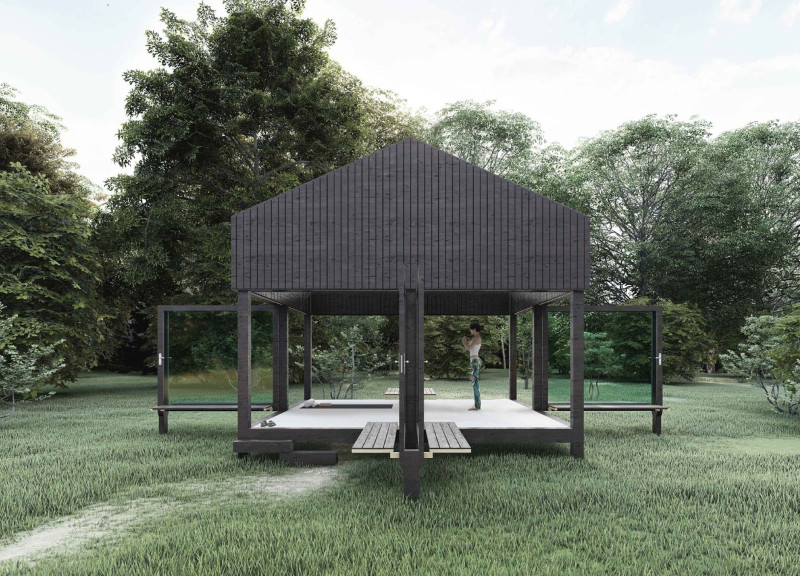5 key facts about this project
The "Empty Cabin" represents a response to the need for spaces that promote mental well-being, allowing inhabitants to step back from the complexities of daily life and immerse themselves in tranquility. It functions as a flexible environment designed for various activities, such as meditation, yoga, or simple relaxation. The cabin provides shelter while incorporating substantial areas of glass, ensuring that natural light floods the interior and provides unobstructed views of the landscape. This connection to nature is fundamental, as the space invites users to engage with their surroundings dynamically.
Key components of the project include a carefully conceived layout that features a central wooden platform, accompanied by transparent walls made of durable glass. This design not only emphasizes simplicity but also reflects an understanding of living harmoniously with the environment. The structure's sloped roof echoes traditional cabin forms, yet it is executed with modern sensibilities that prioritize functionality and aesthetic coherence.
A notable aspect of the project is its material selection, which emphasizes sustainability and resonates with the local context. The use of wood, particularly different forms such as beams, planks, and battens, imparts warmth and enhances the natural character of the cabin. The materials listed include wood beams, wood planks, glass panels, dark-stained timber, and reinforced concrete, among others. Each is chosen not only for its visual qualities but also for its durability and environmental impact, supporting the project’s overarching commitment to sustainability.
One unique design approach incorporated into the "Empty Cabin" is its adaptability to various environmental conditions. The layout allows for multiple configurations, enabling users to interact with the space according to their preferences and the weather. For instance, on warmer days, the cabin can be opened up to foster a seamless flow between indoors and outdoors, while still offering sheltered areas for cooler weather. This flexibility enhances the user experience by accommodating different moods and activities, from solitary reflection to group gatherings.
The architectural ideas driving this project go beyond mere aesthetics, as they revolve around the concept of enhancing human experience in nature. The integration of open spaces encourages occupants to engage with their environment actively, promoting a sense of mindfulness that aligns with contemporary issues surrounding stress and mental health. The cabin's design capitalizes on this by fostering a deep connection between manmade structures and the organic world.
Through its carefully planned architectural designs, the "Empty Cabin" becomes a model for future projects aiming to bridge the gap between architecture and nature. The choice of structural elements, attention to detail in materiality, and thoughtful spatial arrangements all contribute to its purpose as a peaceful retreat. Visitors and users of this space will find a unique opportunity to reflect and rejuvenate, bolstered by the calming presence of the surrounding environment.
To gain deeper insights into the architectural plans, sections, and designs of this project, we encourage you to explore the full presentation of the "Empty Cabin." Delve into the details of its architectural ideas to appreciate how thoughtful design can create a meaningful space for contemplation within the natural world.


























